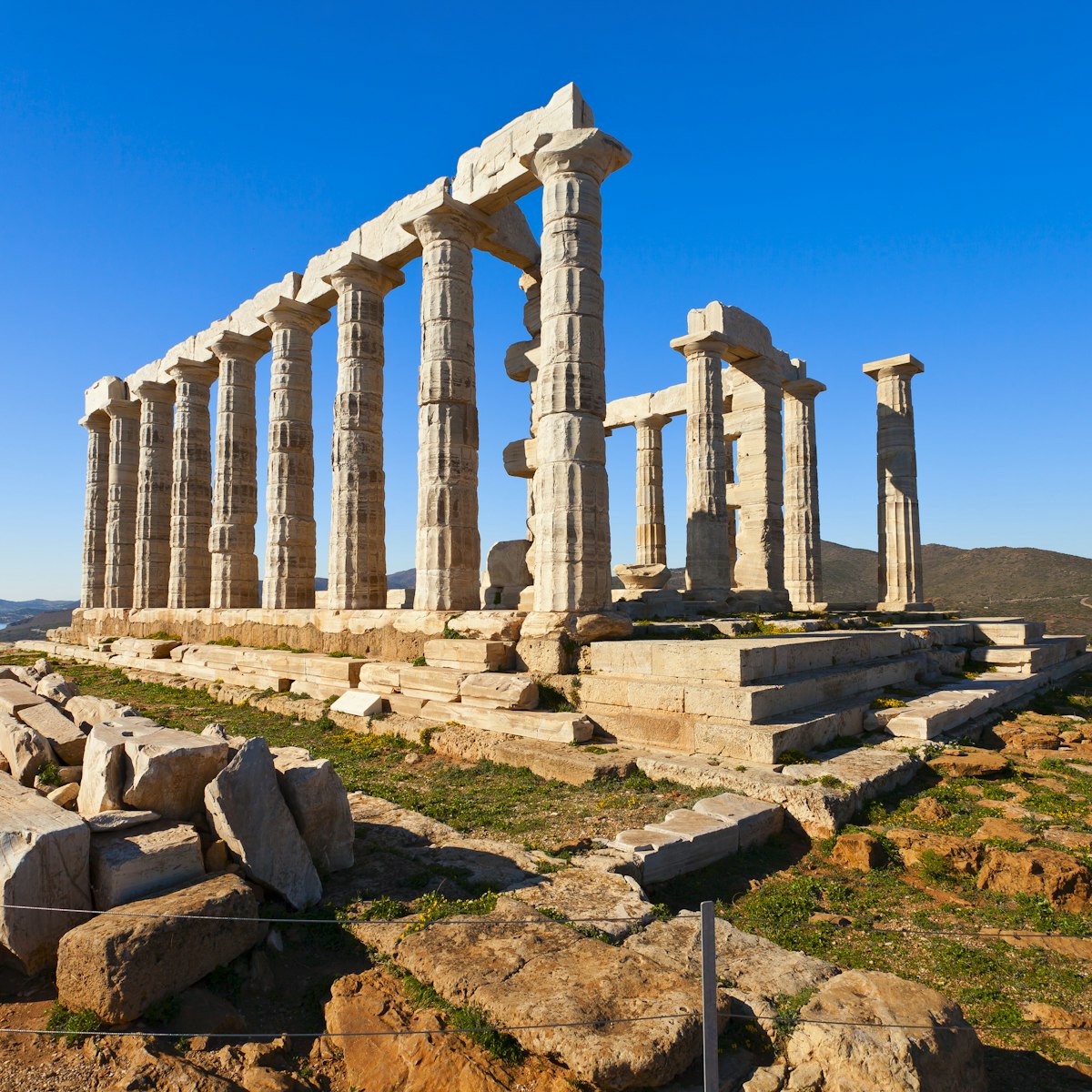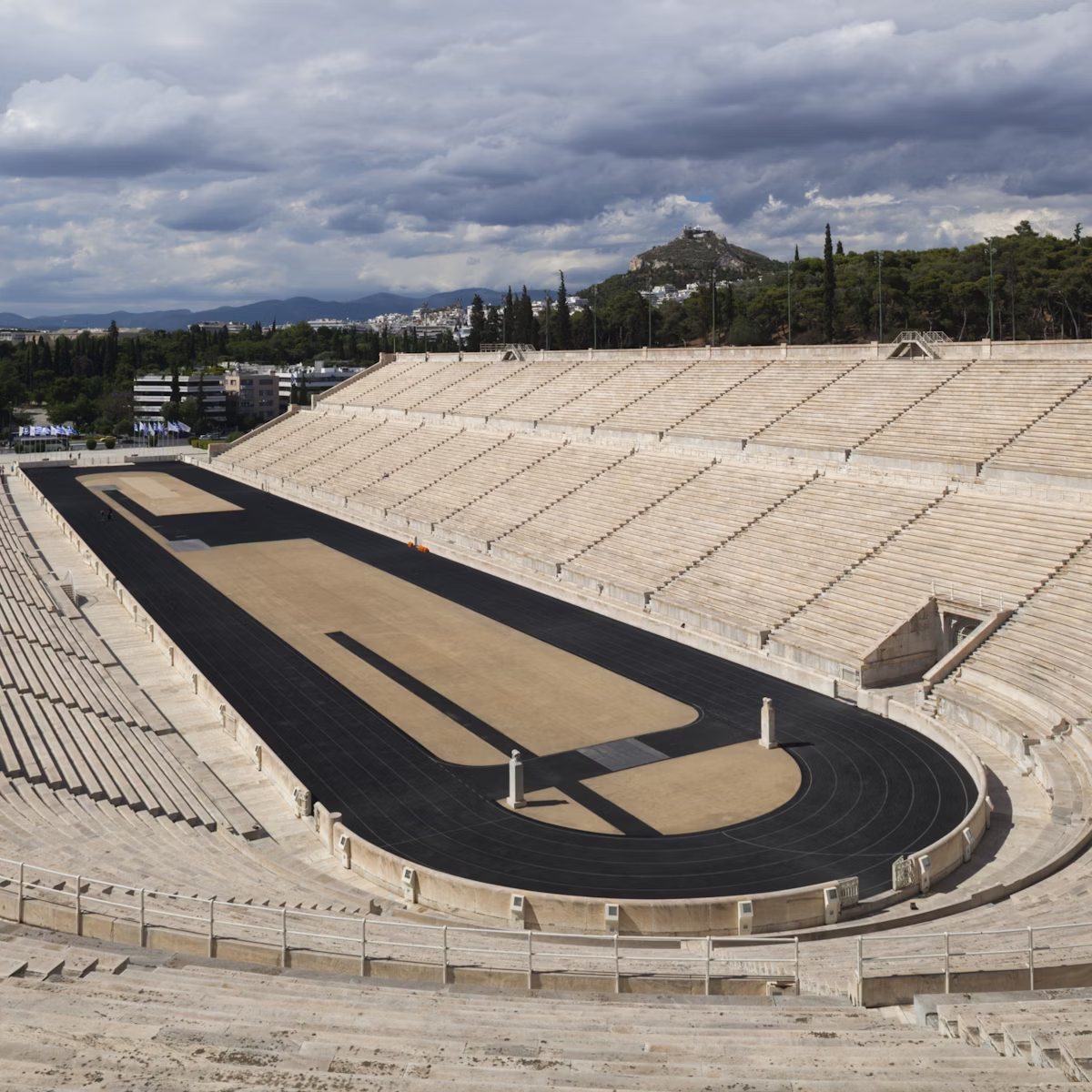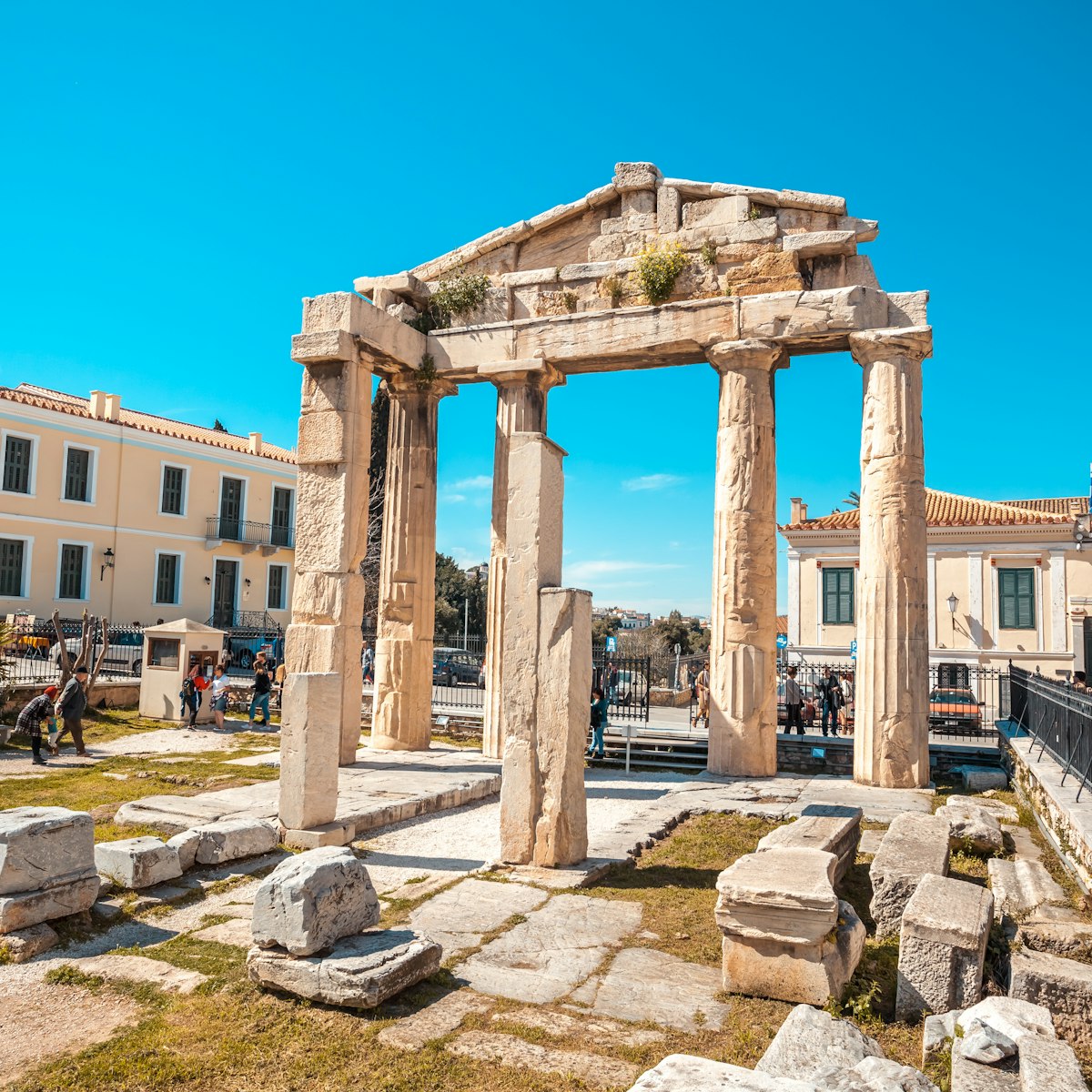This lush, tranquil site is named for the potters who settled it around 3000 BC. It was used as a cemetery through the 6th century AD. The grave markers give a sense of ancient life; numerous marble stelae (grave markers) are carved with vivid portraits and familiar scenes.
The site was uncovered in 1861 during the construction of Pireos St; it once sat on the clay-rich banks of the Iridanos River.
There's an excellent small museum here.
Once inside, head for the small knoll ahead to the right, where you'll find a plan of the site. A path leads down to the right from the knoll to the remains of the city wall built by Themistocles in 479 BC, and rebuilt by Konon in 394 BC. The wall is broken by the foundations of two gates; tiny signs mark each one.
The first, the Sacred Gate, was where pilgrims from Eleusis entered the city during the annual Eleusian procession. The gate marked the end of the Sacred Way, aka Iera Odos, which is now a wide city street that still follows a straight route west to Elefsina. To the northeast are the remains of the Dipylon Gate – the city's main entrance and where the Panathenaic Procession began. It was also where the city's prostitutes gathered to offer their services to travellers. From a platform outside the Dipylon Gate, Pericles gave his famous speech extolling the virtues of Athens and honouring those who died in the first year of the Peloponnesian Wars.
Between the Sacred and Dipylon Gates are the foundations of the Pompeion, used as a dressing room for participants in the Panathenaic Procession.
Leading off the Sacred Way to the left as you head away from the city is the Street of Tombs. This avenue was reserved for the graves of Athens' elite, while ordinary citizens were buried in surrounding areas. The surviving stelae are now in the site museum or the National Archaeological Museum, so what you see are mostly replicas. The astonishing array of funerary monuments and their bas-reliefs warrant close examination. One well-preserved stela (up the stone steps on the northern side) shows a little girl with her pet dog. The site’s largest stela is of sisters Demetria and Pamphile.








